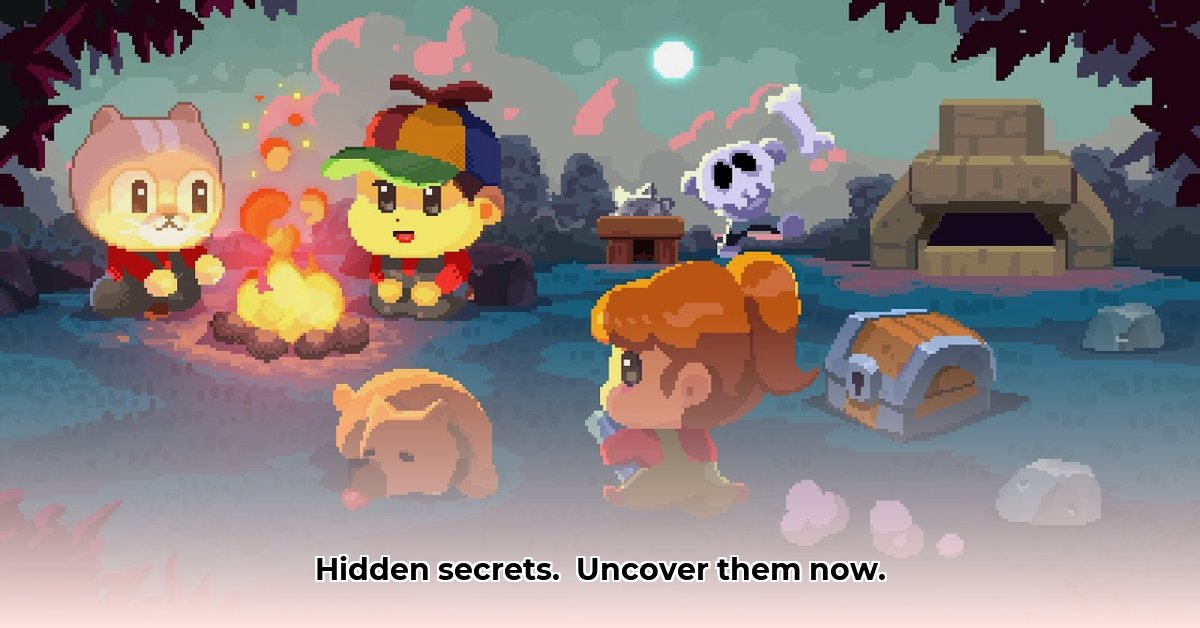
The Way Home: A Roguelike Deep Dive
Get ready to delve into the captivating, yet brutally challenging world of The Way Home. This isn't your average game review; we're conducting a comprehensive technical deep dive, exploring everything from its procedurally generated dungeons and unique character abilities to its narrative structure and technical performance. Whether you're a roguelike veteran or a curious newcomer, this article aims to equip you with a thorough understanding of this pixelated adventure.
Gameplay Mechanics: Mastering the Permadeath Puzzle
The Way Home throws you into the unforgiving embrace of permadeath and procedurally generated dungeons. Each playthrough presents a unique maze of traps, monsters, and the ever-present threat of a game over. This constant variation demands adaptability and resourcefulness. But isn't that the heart of the roguelike experience? Mastering this unforgiving system is immensely rewarding.
Roguelike Elements: Embracing the Randomness
Procedural generation means every map, item drop, and enemy placement is unique. This randomness ensures high replayability, forcing players to adapt their strategies on each run rather than memorizing optimal paths. The permadeath system emphasizes strategic decision making and resource management, as each choice carries substantial weight. Are you ready for the challenge?
Character Classes and Synergies: Finding Your Perfect Team
The Way Home offers a diverse roster of 21 unique characters, each with distinct strengths, weaknesses, and synergistic abilities. The warrior excels in close-quarters combat, the mage unleashes devastating spells, and the rogue thrives in stealth and quick strikes. Do you prefer a brute force approach or a more tactical strategy? The game encourages experimentation to discover the most effective character combinations and optimize playstyle.
Dungeon Crawling and Combat: Navigating the Pixelated Labyrinth
The dungeons are a captivating blend of intricate pathways and hidden rooms. Procedural generation ensures every exploration is unique, demanding spatial reasoning and problem-solving skills. Combat is dynamic and challenging, requiring quick reflexes and strategic thinking. Each victory feels hard-earned and fuels a desire to explore further. But beware – the game’s difficulty scales appropriately, delivering tough encounters demanding skillful play.
Building and Resource Management: A Balancing Act
Resource management in The Way Home is crucial for survival. Gathering materials is vital for upgrading your base camp, improving character abilities, and crafting essential items. This balancing act between exploration, resource gathering, and fortification adds a strategic layer to the gameplay. Ignoring this aspect will significantly hinder progress; making smart decisions about where and how to invest your resources is key.
Story Mode vs. Party Mode: Two Paths to Victory
The Way Home offers two distinct modes: Story Mode and Party Mode. Story Mode weaves a compelling narrative around Kevin and Cheese’s journey home, adding emotional depth to the challenging gameplay. Party Mode focuses purely on survival and combat, removing the narrative layer for a more streamlined roguelike experience. Which path will you choose? This decision significantly impacts the overall gameplay experience and pacing.
Narrative and Story: A Charming Pixelated Tale
While challenging gameplay takes center stage, The Way Home's narrative is a surprisingly compelling element. The story of Kevin and Cheese, seamlessly integrated into the gameplay, provides a heartwarming and engaging layer, giving purpose beyond mere survival. It effectively enhances emotional investment in each playthrough, making the challenging gameplay feel even more rewarding.
Technical Aspects: Performance and Optimization
The Way Home features a charming pixel art style that enhances its retro aesthetic. However, it's not without its technical drawbacks; occasional frame rate drops, especially during intense combat sequences on lower-end systems, have been reported. While this slightly impacts the fluidity of gameplay, it doesn’t significantly detract from the overall experience. The developers are actively working on performance improvements.
Replayability and Longevity: The Ever-Shifting Journey
The Way Home's remarkable replayability stems from its core design. Procedural generation, diverse character classes, and challenging combat ensure each playthrough feels fresh and rewarding. Experimentation is encouraged, constantly motivating players to push their limits and discover more effective strategies. The lack of repetitive content further enhances longevity, ensuring a consistently engaging experience.
Conclusion: A Worthy Pixelated Adventure
The Way Home, despite minor technical issues, is a compelling and rewarding roguelike experience. Its challenging yet fair gameplay, charming graphics, and surprisingly engaging narrative create a satisfying package for roguelike fans. While further optimization is needed, its core gameplay and strategic depth are excellent. This game demands patience, skill, and resilience, making each successful run all the more satisfying. The constant evolution of each playthrough makes this a game you'll want to return to again and again.
⭐⭐⭐⭐☆ (4.8)
Download via Link 1
Download via Link 2
Last updated: Friday, May 23, 2025